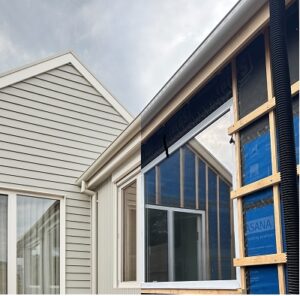Scalp Micropigmentation Cost Explained: What to Expect
Although hair loss can harm self-esteem and self-perception, treatments like scalp micropigmentation (SMP) provide a nonsurgical method for regaining the...

Although hair loss can harm self-esteem and self-perception, treatments like scalp micropigmentation (SMP) provide a nonsurgical method for regaining the appearance of thicker hair. Whether you’re considering this treatment for a receding hairline, thinning crown, or complete baldness, understanding the scalp micropigmentation cost is essential before committing. This guide will walk you through everything you need to know, including pricing factors, value, and what to expect — especially if you’re seeking treatment in areas like Palm Desert.
What Is Scalp Micropigmentation?
The cosmetic technique known as scalp micropigmentation involves implanting natural pigments into the scalp using microneedles. The illusion of thicker hair or a clean-shaven buzz cut is produced by this method, which gives the impression of minute hair follicles. Unlike hair transplants, SMP does not involve surgery, making it a popular option for individuals with thinning hair, alopecia, or those who prefer a low-maintenance solution.
Average Scalp Micropigmentation Cost in the U.S.
The scalp micropigmentation cost can vary significantly depending on your specific needs. On average, treatment ranges between $1,500 to $4,000 for a full scalp, while smaller areas, such as the temples or hairline, may cost around $500 to $1,500. For instance, local clinics in Palm Desert may have lower overhead expenses than cities like Los Angeles or New York, allowing them to provide reasonable rates.
Each session typically lasts 2–4 hours, and most people need at least two to three sessions to achieve the desired result. It’s important to budget for the full treatment rather than just one session, as follow-ups are necessary for pigment layering and color blending.
Key Factors That Influence Scalp Micropigmentation Cost
Several variables impact the overall scalp micropigmentation cost, including:
1. Level of Hair Loss
The more area that needs coverage, the higher the cost. Someone with just a thinning crown will likely pay less than someone requiring full-scalp pigmentation.
2. Number of Sessions
Most clinics recommend 2–4 sessions, spaced a few weeks apart. Each session adds to the total cost, but is necessary for natural-looking results.
3. Clinic Location
Urban areas with high demand and premium clinics, such as those in Beverly Hills or Manhattan, usually charge more. In contrast, Palm Desert offers professional-grade treatment with more affordable pricing.
4. Experience of the Practitioner
Highly skilled SMP artists with certifications and years of experience will charge more, but they also deliver better and safer results. Never compromise on quality to save money.
5. Customization and Hairline Design
Clients who request a specific or natural-looking hairline may be charged more for the extra planning and precision involved.
Additional Costs to Consider
While the base scalp micropigmentation cost might seem manageable, you should also consider related expenses. Some clinics charge for consultations, especially with top-tier practitioners. Aftercare products like healing balms and special shampoos may also be required to protect the pigment.
Additionally, maintenance sessions are usually recommended every 3–5 years to refresh the pigment and ensure the look remains crisp and natural. These touch-ups cost less than the initial treatment but should still be factored into your long-term budgeting.
Is Scalp Micropigmentation Worth the Cost?
When comparing SMP with other hair restoration methods, many find the scalp micropigmentation cost to be a better value. Unlike transplants, there’s no downtime or surgical risk. Unlike wigs or hair fibers, the results are long-lasting and weather-resistant.
In areas like Palm Desert, many patients appreciate how this treatment offers both affordability and quality care. Clinics here are known for their personalized service, modern facilities, and certified technicians — often at a fraction of the big-city price.
Conclusion
Understanding the scalp micropigmentation cost is crucial before starting treatment.Due to the confidence and convenience it offers, many people consider the expenditure to be worthwhile, even if costs differ depending on variables such as the location, degree of hair loss, and practitioner expertise. The choice of clinic can significantly impact the outcome and expense, regardless of whether you are in a big metropolis or a more laid-back, professional place like Palm Desert.
If you’re seeking a long-lasting, low-maintenance solution to hair loss, SMP is a smart and cost-effective option — especially when done by qualified professionals who prioritize quality and safety.
FAQs About Scalp Micropigmentation Cost
Q1. How much does scalp micropigmentation cost on average?
The average scalp micropigmentation cost in the U.S. ranges between $1,500 and $4,000, depending on the size of the treatment area, the number of sessions required, and the clinic’s location. Small areas like the hairline may cost less, while full-scalp treatments cost more.
Q2. Is a hair transplant less expensive than scalp micropigmentation?
Yes, SMP is typically more affordable. While scalp micropigmentation cost ranges from $1,500 to $4,000, a hair transplant can cost $6,000 to $15,000 or more. SMP also has less downtime and doesn’t require surgery.
Q3. Does the cost of scalp micropigmentation include follow-up sessions?
Most clinics include 2–3 sessions in the initial scalp micropigmentation cost, as layering is essential for natural results. However, touch-up sessions after a few years are usually priced separately.
Q4. How long do scalp micropigmentation results last?
Results typically last 4–6 years, after which a touch-up may be needed to refresh the pigment. The cost of touch-ups is usually lower than the initial treatment.
Q5. Is a more expensive clinic always better?
Not necessarily. While experienced practitioners may charge more, you can still find highly qualified professionals at competitive rates — especially in areas like Palm Desert, where operating costs may be lower.





